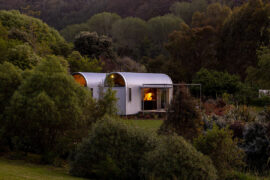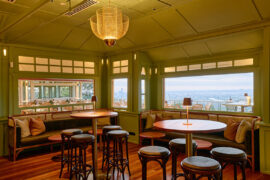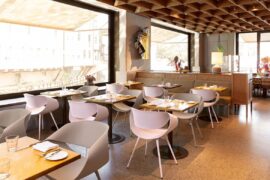Simon N. Ostheimer speaks with one of Thailand’s foremost landscape architects about luck, the future of his profession, and what needs to be done to improve Bangkok’s public spaces.

November 9th, 2017
How did you get into landscape architecture?
It was pure luck. I didn’t know much about the profession when I was accepted into the Department of Landscape Architecture at Chulalongkorn University in 1991. I was only 16 years-old and had the chance to try Thailand’s University Entrance Examination for the first time. I didn’t do enough research because I didn’t expect to pass the exam [laughs].
How would you describe your own design style?
At TROP we try to have no style at all. Instead we pay attention to the design process and let it determine what landscape design we need at each particular site.
Why do you work frequently in hospitality design?
There are many good reasons why landscape architecture is very important to hospitality design. First of all, great hotels are about memories. In order for hotel guests to remember the stay forever, the experience has to be perfectly seamless right from the first second of a guest arriving. Landscape architects help create a better journey for your stay. We compose the outdoor spaces to create better experiences. At the same time, we believe that good landscape design doesn’t have to scream ‘look at me’ all the time. In fact, we believe that it must belong to the context, to the topography of the site, and to the culture of the local people.
What landscape architecture inspires you most?
I am always inspired by agricultural landscapes. They are functional and also created within the natural context. Nothing is pretentious, and yet they are extremely beautiful.
How would you improve Bangkok’s public spaces?
There are millions of things to be improved here [laughs]. Our problem, I believe, is that we have too many people involved in public spaces, especially ownership-wise. What bothers me most is that each of them don’t work together in order to achieve good public spaces. For example, if I wanted to improve some vacant land that belongs to some organisation, most of the time they wouldn’t let us do anything unless we offer them very high rental.
So what I am trying to do is to collaborate with private developers on each of our projects. We try to convince the clients to open their private space for public uses as well. This way, the developers create better traffic for their properties and the public benefits by using the space for outdoor activities. Sometimes the developers contact local officials to improve the surrounding areas as well. It’s a win-win situation.
Do you think Thailand embraces landscape architecture?
Honestly, landscape architecture is quite new to the country. My school [Chulalongkorn University] has been teaching it for more than 40 years, but not many people know of it. My studio TROP was founded 10 years ago. In the early years, some clients didn’t even know we existed or what we could do for them. They hired us because their competitors did [laughs]. Now the public know more about us, thanks to the new ways people want to live in Bangkok. Because of our terrible traffic problems, more and more people are starting to move into the city and live in condominiums. That’s how they started to learn about landscape architecture, because we designed the facilities in those condominiums.
Thai people also visit other countries much more than they used to do. They have learned that developed countries invest a lot in their public spaces. I think Thailand, as a country, doesn’t value our profession as much as it should, but, for sure, people are already coming to understand that landscape architecture is very crucial to everyone’s day-to-day living.
INDESIGN is on instagram
Follow @indesignlive
A searchable and comprehensive guide for specifying leading products and their suppliers
Keep up to date with the latest and greatest from our industry BFF's!

A curated exhibition in Frederiksstaden captures the spirit of Australian design
The new range features slabs with warm, earthy palettes that lend a sense of organic luxury to every space.

For Aidan Mawhinney, the secret ingredient to Living Edge’s success “comes down to people, product and place.” As the brand celebrates a significant 25-year milestone, it’s that commitment to authentic, sustainable design – and the people behind it all – that continues to anchor its legacy.

Projects and people from across our region were certainly prominent at the 2025 INDE.Awards gala and in particular, Aotearoa/New Zealand, Singapore and Thailand made their presence felt.

The Australian Institute of Landscape Architects (AILA) NSW Chapter has announced the winners of the 2025 NSW Landscape Architecture Awards.
The internet never sleeps! Here's the stuff you might have missed

A multi-million dollar revitalisation of the heritage-listed venue at Brisbane’s beauty spot has been completed with The Summit Restaurant.

We think of the chair as a ubiquitous object but every now and then there is a design that ticks all the boxes and makes its presence felt on the global stage.